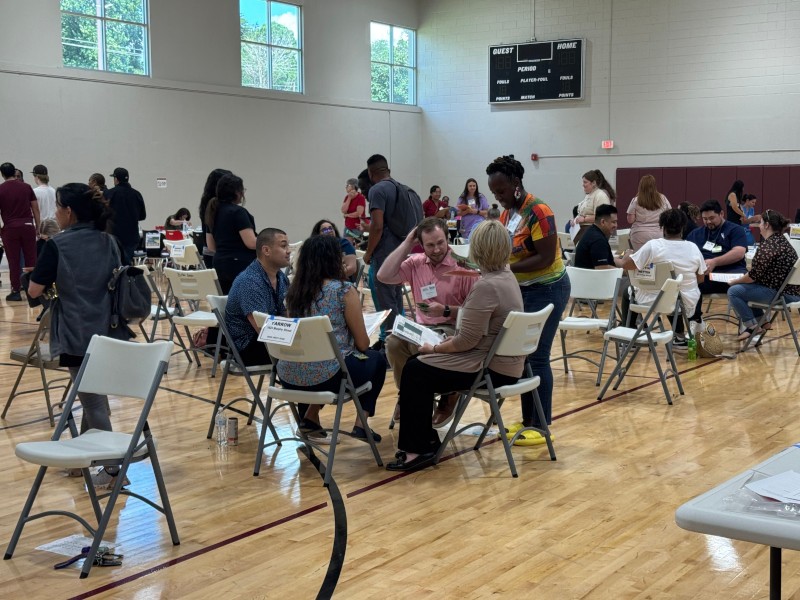Hall County Family Connection and the University of Georgia’s Hall County extension held a poverty simulation at the Butler Center on Wednesday.
Roughly 50 people in the Hall County community could be seen rushing from their chairs with their “families” to the employment table or the pawn shop table at the Butler Center’s gym. The simulation was meant to help participants gain an understanding of what a typical low-income family goes through.
“What we want to do is raise awareness about the challenges that families and individuals face every day,” Executive Director for Hall County Family Connection Kyndra Cohen said.
In the simulation, participants assumed the roles of different families facing poverty.
“You may not be able to pay for childcare, you may have to go to the pawn shop to make a decision,” Cohen said.
Family and Consumer Sciences Agent for UGA’s Hall County extension Gwen Hawn said they put these simulations on to help anyone working with the public get a better understanding of poverty in their communities.
“As people, we all feel empathy towards individuals who are poor or what we consider in poverty, but we don’t really understand the constraints of people who are employed,” Hawn said. “They still need assistance in order to reach those basic needs, and only people who are in positions of influence really can help with that.
Two participants were resident doctors in their first year at Northeast Georgia Health System (NGHS). They were paired up as 13-year-old twins tasked with taking care of their baby brother.
“These two people found me and tried to offer me a job, but it entailed selling drugs,” one of the resident doctors said. “Because we’re desperate for money, I took the opportunity.”
The other resident said transportation was a big issue during the simulation. She realized even if she got a job, she did not have transportation to get there every day and start earning money.
“It’s so different,” she said. “I feel like I already had a semi-understanding, but it’s just different having to experience it and see the barriers to even just getting a job.”
One statistic that Cohen and Hawn cited was the Asset Limited, Income Constrained, Employed (ALICE) count. ALICE households earn more than the federal poverty level, but still live paycheck to paycheck as it is still below the basic cost of living for the county.
Hall County’s poverty rate is 13.2%. That is slightly less than the state average, but 32% of households in the county fall under the ALICE count. That means the ALICE and poverty population of Hall County is 44%.
There has been a roughly 33.3% increase in ALICE households in Hall County since 2010, with 24,394 households falling in that range.
“Express empathy, because you never know what someone is going through,” Cohen said. “You never know what decisions that they have to make. Empathy, patience, and then unity. That is what we want for Hall County.”

http://accesswdun.com/article/2025/7/1293279/simulation-held-at-butler-center-helps-community-members-understand-families-facing-poverty
